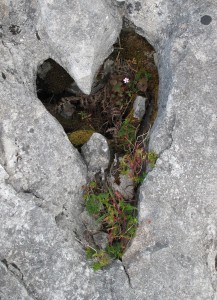 London has the oldest and most extensive public transportation system in the world – which (in my admittedly biased opinion) is still a delight to use almost 125 years after its inception. However, because of the way earth settles and rises, rivers change course, and soil composition alters over time, not every platform lines up perfectly with the actual floor of every train. Therefore, just before the train doors open in a station, you will hear the warning, “Mind the gap between the train and the platform.” Which, I might note, is sometimes an inch or two and sometimes large enough to swallow a small dog.
London has the oldest and most extensive public transportation system in the world – which (in my admittedly biased opinion) is still a delight to use almost 125 years after its inception. However, because of the way earth settles and rises, rivers change course, and soil composition alters over time, not every platform lines up perfectly with the actual floor of every train. Therefore, just before the train doors open in a station, you will hear the warning, “Mind the gap between the train and the platform.” Which, I might note, is sometimes an inch or two and sometimes large enough to swallow a small dog.
This has been shortened to ‘Mind the Gap’ and printed on everything from postcards to t-shirts to coffee mugs to canister sets to socks for tourists and visitors.
I suspect that Londoners have heard the words so often that they don’t really zing any more, but it is a phrase well-worth considering in every era and area of human endeavor, and may be particularly apt as we enter a time when gaps seem to be much more extreme than they have been in the recent past. I think of the widening gaps between the ‘haves’ and the ‘have-nots’ in health care, in legal protection, in income parity, in education, in access to clean water, in safe working conditions, in freedom for gender, racial, and religious minorities and the outcast
If we are focusing on the tone and texture of the culture around us, we have seen the destabilizing effects of some of these gaps. We have all heard (some of us have even felt) the anger and resentment they cause locally, nationally, internationally. The Arab Spring continues to send ripples in every direction: surge and counter-surge. Immigration policies in the USA, the EU, Australia. Surge and counter-surge. The upcoming election in the UK, and the seemingly perpetual election cycle in the US. The Affordable Care Act. The Minimum Wage. Surge and counter-surge. Same-gender marriage. Water rationing in California is just starting, the screams of outrage have yet to build, but already there is muttering between farmers and non-farmers. Surge and counter-surge.
I was reminded of how gaps can be exacerbated – and how they can be narrowed – by a brief article in The Metro, which is a free paper available on the Underground. The article was reporting on a young man named Adam Smith, who is the founder of The Real Junk Food Project. Smith emigrated from Yorkshire to Australia, where he became interested in sustainability and ethical systems. When he returned from Australia to the UK with a dream about narrowing the gap in food accessibility, he wrote something on the order of 5000 e-mails to every restaurants and food retailer (and friend and acquaintance) in Leeds. He got two replies from folks who thought it was do-able…and that was enough encouragement to get started.
I just want to pause here and say that I am not sure I would have hung in there for two replies out of 5000 e-mails. In fact, I would have given up around e-mail 341 – if not sooner – when I had gotten no interest and no support. I want to acknowledge how difficult it is to nudge the world one breath out of its orbit onto a new path, and I want to celebrate the (frequently unnamed and unrecognized) folks who so Mind the Gaps (and find them so unjust) that they are willing to give their life-force to bridging them.
With two college students, Smith opened the first restaurant where every meal was prepared exclusively from surplus produce on its way to the landfill. Anyone can eat there. And people pay what they can afford – from nothing to ‘the sky’s the limit.’ There are now something like 38 of these world-wide, started by people who ate at the one in Leeds or the one in London and said, ”I can do this in Calcutta (Helsinki, Cairo, Tokyo, Birmingham).” [Denver has a restaurant with a similar economic model, although the one there does not use discarded food.] Smith’s contention is that there is enough food for everyone if the rich (meaning anyone who can eat without worrying where our next meal is coming from) stop throwing it away, and stop expecting our grocery stores to throw an apple away if it gets bruised, and stop expecting restaurants to throw away anything past its sell-by date (which is not its use-by date!)
As I am traveling, I am seeing gaps through a fresh lens. As I said in an earlier blog, this is easier to do when you have the luxurious gift of being outside your normal patterns, but it is something I hope to bring home with me and apply more intentionally in my own geographical space. Because it seems to me that every single benefit to the common good has come about because someone (or some group) Minded the Gap – with passion, with love, with a single-minded attention.
Someone minded the gap between those children who had a chance at education and those who didn’t. Someone minded the gap between workers in safe factories and those in unsafe ones. Someone minded the gap between those with political voice and those without. Someone minded that a few people could afford health care and a lot of people could not – and the people who could not, suffered. And, in England, someone minded that people were going hungry with dumpsters full of fresh and healthy food sitting full in Mayfair and Knightsbridge.
I am trying to identify (and mind) the gaps in my field of vision. Ideally I will find one that fires my passion, but the important point is to get started. The smallest shift will make a difference… I can always swap to another gap once I have made it a habit to do something beyond merely notice the one in front of me.
Maybe you know of a Gap in your life. Maybe it is yours to Mind. What I found myself wondering as I finished the article and got off the Tube is whether the sole purpose of our lives is to mind the gaps: the gap between my abundant existence and someone else’s bare subsistence, the gap between my ability to be heard and someone else’s invisibility, the gap between the school system in my town and the one in the inner-city, the gap between my heart and the heart of my enemy.
Mind the Gap — it makes a good mindfulness practice, I think.
–Andrea
Text © 2015, Andrea La Sonde Anastos
Photos © 2015, 2014 Immram Chara, LLC

